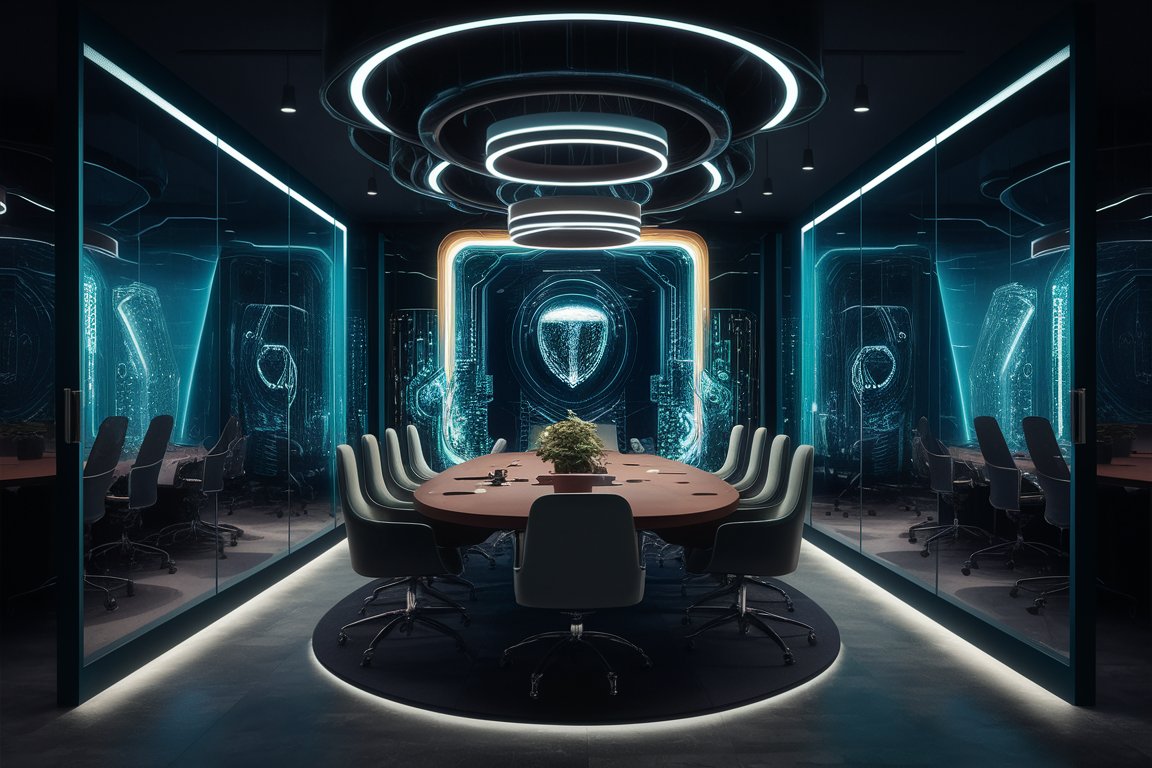Embracing AI in Modern Office Design: A New Era
In the ever-evolving landscape of office interior design, Artificial Intelligence (AI) is emerging as a transformative force. AI technologies are revolutionizing how offices are designed, from enhancing efficiency in space utilization to creating personalized work environments that cater to employee needs. This blog post explores the integration of AI in modern office design, highlighting its benefits, real-world applications, and future implications.
The Rise of AI in Office Interior Design
AI has swiftly made its mark across various industries, and office interior design is no exception. By leveraging AI-powered tools and algorithms, designers can streamline the design process, optimize space planning, and predict trends with unprecedented accuracy. Let’s delve into how AI is reshaping modern office design:
1. Enhanced Space Utilization
One of the key advantages of AI in office design is its ability to optimize space utilization effectively. AI algorithms analyze data such as floor plans, employee workflows, and spatial requirements to suggest layouts that maximize efficiency without compromising comfort or functionality.
Case Study: Optimizing Workspace Efficiency
A multinational corporation faced challenges with inefficient workspace utilization across its global offices. By adopting AI-powered space planning tools, the company analyzed usage patterns and employee behaviors to redesign office layouts. The result was a significant reduction in wasted space and improved collaboration among teams.
Problem: Challenges in Traditional Office Design
Traditional office design often faces several challenges that AI can help overcome:
- Inefficient Space Planning: Manual space planning processes may overlook opportunities for optimizing office layouts.
- Limited Personalization: Designing personalized workspaces tailored to individual employee preferences and needs can be challenging without AI insights.
- Predicting Trends: Staying ahead of design trends and adapting to evolving workplace dynamics requires accurate predictive capabilities.
Agitation: The Impact of Inefficient Design Practices
Inefficient office design practices can lead to:
- Reduced Productivity: Poorly designed workspaces may hinder employee productivity and collaboration.
- High Operational Costs: Wasted space and energy inefficiencies can increase operational expenses for businesses.
- Employee Dissatisfaction: Uncomfortable or uninspiring work environments may contribute to lower job satisfaction and higher turnover rates.
Solution: Embracing AI for Office Design Innovation
Here are ways AI is transforming modern office design:
2. Personalized Work Environments
AI enables designers to create personalized work environments that cater to individual preferences and work styles. By analyzing data on lighting preferences, temperature control, desk arrangements, and ergonomic needs, AI-driven designs can enhance employee comfort and satisfaction.
3. Predictive Design Trends
AI algorithms analyze vast amounts of data from global design trends, user preferences, and industry insights to predict future design trends accurately. This foresight allows designers to create forward-thinking office spaces that are both functional and aesthetically appealing.
4. Energy Efficiency and Sustainability
AI-powered systems optimize energy consumption within office spaces by adjusting lighting, heating, and cooling based on real-time occupancy data. This not only reduces carbon footprints but also lowers operational costs for businesses.
5. Seamless Collaboration and Communication
AI-enhanced communication tools facilitate seamless collaboration among design teams, clients, and stakeholders. Virtual reality (VR) and augmented reality (AR) technologies powered by AI allow stakeholders to visualize and experience office designs in immersive environments before implementation.
Case Study: AI-Powered Design Success
A tech startup embraced AI for designing its new headquarters, integrating personalized workstations, predictive lighting controls, and sustainable materials. AI algorithms continuously monitored and adjusted environmental conditions based on employee feedback, resulting in improved productivity and employee satisfaction.
Conclusion: The Future of AI in Office Interior Design
As AI continues to evolve, its role in office interior design will become increasingly pivotal. By embracing AI-powered tools and methodologies, businesses can create modern, adaptive office spaces that foster innovation, productivity, and employee well-being. From optimizing space utilization and predicting design trends to enhancing energy efficiency and personalizing work environments, AI offers limitless possibilities for shaping the future of workspaces.


